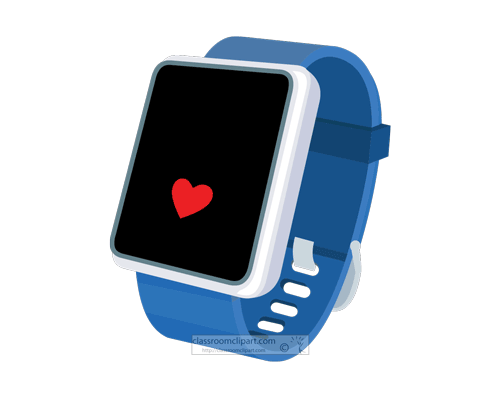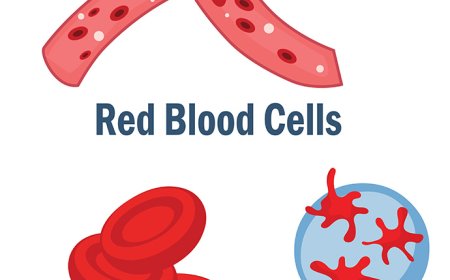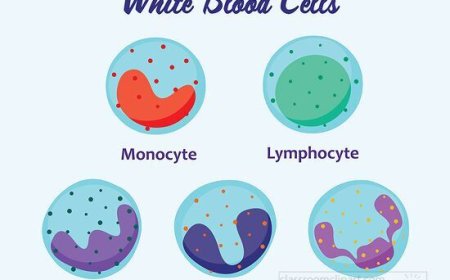The Large Intestine: How Your Body Gets Rid of Waste
Learn how the large intestine absorbs water, forms stool, and completes digestion. Discover its parts, functions, and role in keeping your body healthy.
🧻 The Large Intestine: The Body’s Waste Recycler
(Part of the Human Body Organs Series – Digestive System)
SEO Title: The Large Intestine: How Your Body Gets Rid of Waste
SEO Description: Learn how the large intestine absorbs water, forms stool, and completes digestion. Discover its parts, functions, and role in keeping your body healthy.
SEO Keywords: large intestine function, colon and digestion, waste removal body, parts of large intestine, what does the large intestine do, how poop is formed, digestive system
🧠 Introduction: The Final Stop in Digestion
After food has been broken down in your stomach and absorbed in your small intestine, what’s left still needs to exit the body. That’s where the large intestine comes in. This part of the digestive system is responsible for absorbing water, forming solid waste, and getting rid of what your body doesn’t need.
Even though it’s shorter than the small intestine, the large intestine is wider and very important. It helps maintain your body’s fluid balance, keeps your digestive system running smoothly, and even houses helpful bacteria that protect your health.
📍 Where Is the Large Intestine Located?
The large intestine wraps around the outer edges of your abdomen in a kind of upside-down "U" shape. It connects:
At the top: to the end of the small intestine
At the bottom: to the rectum and anus, where waste leaves the body
It is about 5 to 6 feet (1.5–1.8 meters) long and twice as wide as the small intestine.
🔄 What Does the Large Intestine Do?
The large intestine’s main job is to turn leftover food into stool (poop) and remove it from the body. It also absorbs water, salts, and vitamins during this final stage of digestion.
Here’s what happens:
Water is absorbed from the waste material, making it more solid
Helpful bacteria break down any remaining bits of food
The large intestine forms and stores feces (poop)
Muscles push the waste toward the rectum, where it stays until you're ready to go to the bathroom
Without the large intestine, your body wouldn’t be able to stay hydrated or clean from the inside out.
🧱 Parts of the Large Intestine
The large intestine has four main parts, and each one plays a specific role in the waste-removal process:
1. Cecum
A small pouch at the beginning of the large intestine
Connected to the ileum (the end of the small intestine)
The appendix is attached here (a small organ with a debated function)
2. Colon
This is the largest section, and it has four parts:
Ascending colon – goes up the right side of your abdomen
Transverse colon – runs across your belly from right to left
Descending colon – travels down the left side
Sigmoid colon – S-shaped part that leads to the rectum
Each part helps move and shape the waste as water is removed.
3. Rectum
The final holding area for stool
Signals your brain when it's time to go to the bathroom
4. Anus
A muscular opening that allows waste to leave the body
Controlled by sphincter muscles that open and close
🧬 Helpful Bacteria in the Large Intestine
The large intestine is home to trillions of helpful bacteria. These microbes are part of your gut microbiome and help:
Break down leftovers the small intestine couldn’t
Make vitamins like vitamin K
Prevent harmful bacteria from taking over
Boost your immune system
This is why eating fiber-rich foods and probiotic-rich foods (like yogurt) can help keep your gut and large intestine healthy.
✅ How to Keep the Large Intestine Healthy
Your large intestine works hard every day. Help it out by:
Eating lots of fiber (fruits, vegetables, and whole grains)
Drinking plenty of water
Staying physically active
Going to the bathroom regularly—don’t hold it in!
Avoiding too much processed food or junk food
Washing hands to prevent stomach bugs and infections
If you have trouble going to the bathroom, stomach cramps, or changes in your stool, talk to a doctor. These could be signs of problems like constipation, IBS, or colitis.
🧠 Vocabulary List
Term Definition
Large intestine The last part of the digestive system that absorbs water and forms waste
Colon The longest section of the large intestine
Rectum The part of the large intestine that stores stool before it's released
Anus The opening where stool exits the body
Cecum The first part of the large intestine, connected to the small intestine
Appendix A small pouch near the cecum with an unknown role in digestion
Peristalsis Muscle movement that pushes food and waste through the digestive system
Fiber A plant part that helps clean out your digestive system and move stool along
Feces (stool) The solid waste left over after digestion
Gut bacteria Good microbes in your intestines that help digestion and protect your body
❓ Interactive Quiz: Large Intestine Logic
1. What is the main job of the large intestine?
A. Make blood cells
B. Absorb nutrients
C. Absorb water and remove waste
D. Chew food
2. Which section comes first in the large intestine?
A. Colon
B. Appendix
C. Rectum
D. Cecum
3. What helpful things live in the large intestine?
A. Bones
B. Bacteria
C. Nerves
D. Teeth
4. What connects the large intestine to the outside of the body?
A. Mouth
B. Anus
C. Colon
D. Appendix
5. What kind of food helps your large intestine stay healthy?
A. Candy
B. Fried foods
C. Fiber-rich foods like vegetables and grains
D. Soda
🟢 Answers: 1-C, 2-D, 3-B, 4-B, 5-C
⭐ Kid-Friendly Summary
The large intestine is the last stop in your digestive system. It takes what’s left after food is digested and removes water, shapes it into poop, and gets rid of waste your body doesn’t need. It’s shorter but wider than the small intestine and is full of friendly bacteria that help keep you healthy. Eating fiber and drinking water helps your large intestine do its job every day!
🤯 Fun and Interesting Facts
The large intestine is about 5 feet long, but twice as wide as the small intestine.
Your body makes about half a pound of poop a day!
You have more bacteria in your gut than cells in your entire body.
The appendix may help support healthy gut bacteria.
Foods with fiber act like a broom, sweeping your intestines clean.






















































